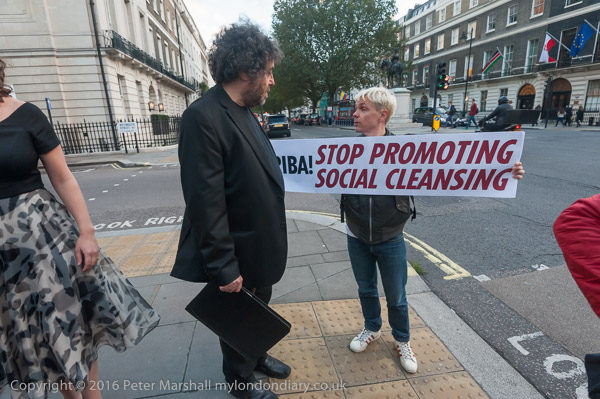
It’s hard not to get depressed when thinking about housing in London, though I’m fortunate enough not to have to worry on my own account. Though even when we bought the house we still live in, back in 1974 we couldn’t afford one in either of the two places we thought about in London, so had to go just outside the Greater London boundary.
We had lived for some years in rented accommodation, at first privately rented, and the first landlord after we were married was decent enough, except for the excessive charges for gas and electric on his slot-meters. We bought a paraffin heater. But the rent for two rooms – the top floor of a small house – was the equivalent of around £2.80 a week, less than a quarter of my income (and around an eighth of our joint income.)
Things were a little less comfortable and more expensive when we moved to Leicester for a year- and the agent for the flat didn’t want to know much about anything except collecting the rent, and it was a relief when I got a job in Bracknell to qualify for housing from the development corporation, a new and spacious two bedroom flat at a lower rent than we had been paying a private landlord for out rather dingy single room.
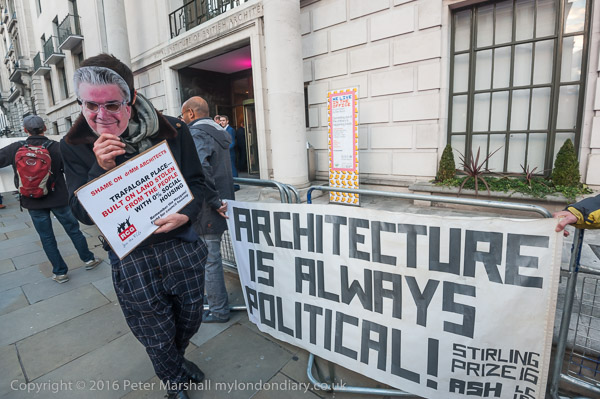
We were only there four years, but they were four years when the rent more or less doubled, as rents were being brought into line with market rents I think solely for politically doctrinaire reasons. It made it easier to decide to buy a house (though we had other reasons too) as the rent was now very little different to the payments on a mortgage.
Now, many years later, that mortgage is long paid off – and we even made a profit as we had been advised to take out an endowment mortgage so my housing costs are limited to upkeep, though being a property owner isn’t always a good thing. But when I look at the rents that people pay in London now (or even on the edge where I live) I realise that unless I owned the house I would probably have to move elsewhere. It mightn’t be all that bad – I could still afford to live in Hull.
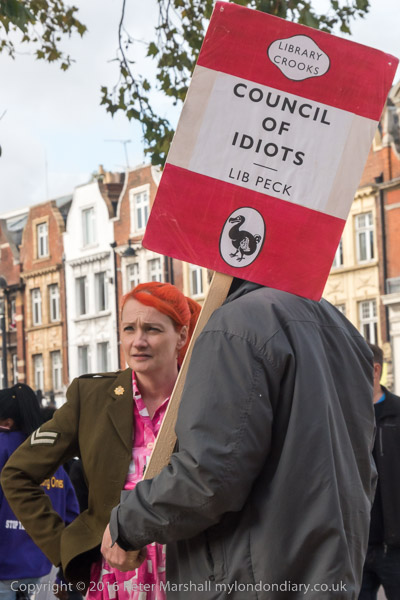
Back when I was small, my father still looked after some of the handful of cottages that his father had built for the men that worked for his various small businesses, none very successful, but these properties were never meant to be a source of income, just somewhere for those who shared in his work and their families to live. Rent control meant that the income from them failed to pay for keeping them in order, and when they were sold with sitting tenants as a part of my grandmother’s estate they were almost worthless (though now they probably fetch approaching half a million.)
Now private landlords are hugely subsided by the government paying housing benefit and are allowed to charge what they can get, with the result that rents have risen through the roof. And the incredible rise of ‘buy to let’ provides a way for those with some capital to exploit others and make money for nothing.
In my ideal world we would have a land tax and the ownership of land and property would be severely limited – sufficient to needs rather than for investment or profit. It’s an assessment that could be reasonably generous rather than unnecessarily punitive. But in the unequal world we have, there does seem an urgent need to do something to make private renting more affordable, as well as ending the taxpayer subsidy of practices which are clearly against the public interest.
I’d also like to see an good supply of socially provided rented housing – council homes, enough for all those who want it, something that would rapidly bring down private rents. But after the election of Mrs Thatcher, social housing figures fell steeply, continuing down to a miserable 13,500 under New Labour in 2003. Corbyn earlier this year promised a Labour government would build and average of 50,000 a year in its five year term (50% of his target for all new homes) – returning to a level last recorded under Thatcher in 1982. But Thatcher’s main contribution was of course the ‘right to buy’ which has removed 1.87 million social housing homes since 1980, a large percentage of which are now ‘buy to let’ private rental properties.
But even more shameful than Thatcher’s ‘right to buy’ is New Labour’s ‘Regeneration’ policy which, through the activities of London Labour councils such as Newham, Lambeth and Southwark has led to the wholesale loss of social housing, and a disruption of local communities that even the Luftwaffe failed to achieve.
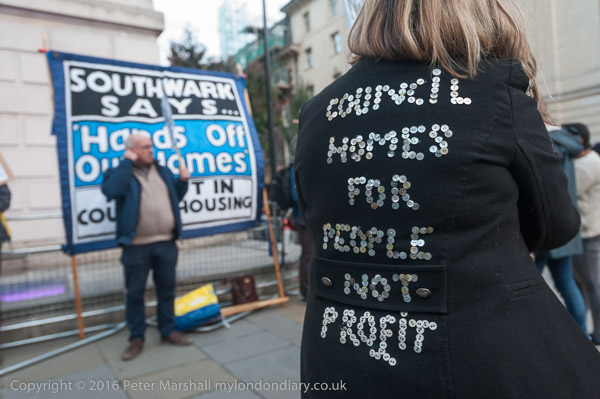
Southwark’s prime example (though they are currently working on rather more) is of course the architectural award-winning Heygate Estate which was at the Elephant and Castle, an example I’ve mentioned before. In 2007 the council valued the estate at £150m, though they had been employing consultants and PR to demonise it for some years, and deliberately housing difficult tenants there. Despite this, 189 of those living in the 1,212 council homes had liked living there enough to become leaseholders, and the few properties I went in were spacious and in good condition, with the landscape outside coming into maturity as the trees planted when it was built grew. In many respects it was a well-planned and well laid out site and most of the building had been to a high standard, and with relatively minimal care it could have lasted at least another 50 years.
Southwark spent at least £51.4m on clearing that estate, but they sold it to Lendlease for £50m and a promise (very unlikely ever to be fulfilled) that they would eventually get some of the developers excessive profits from the site. To replace those 1,212 (the leaseholders property having been taken back for peanuts) homes, the new Elephant Park will just 74 homes for social rent. This one estate represents over one eighth of the total loss of 8,000 social-rented homes.
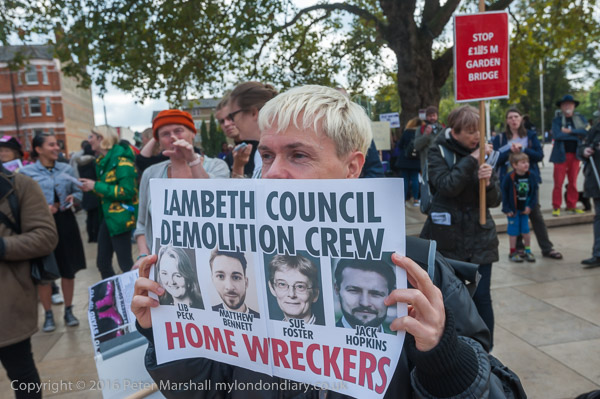
The protest on Thursday 6 Oct was outside the Stirling Prize Ceremony where Trafalgar Place, the first phase of Lend Lease’s development on the Heygate had been nominated for the prize. drMM Architects didn’t win that prize, but outside were awarded the Architects for Social Housing ‘O J Simpson Award for getting away with murder’ though they didn’t turn up to accept it.
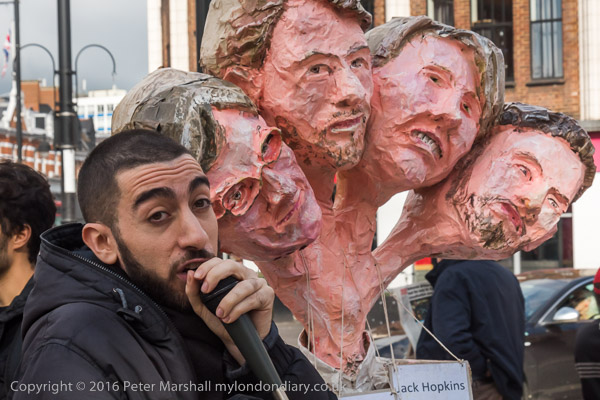
The following Saturday I was in the neighbouring borough, Lambeth, celebrating the achievement of that council, also Labour, calling on it to stop demolishing council estates, closing libraries and driving out local businesses with the closure of the Brixton Arches. Among the estates being demolished or marked for demolition are Myatts Field North, Cressingham Gardens and Central Hill, the last such fine example of good architectural and community design that it is hard to believe was denied listingon other than political grounds.
ASH protest Stirling Prize
Stand Up to Lambeth Council
Stand Up to Lambeth March
Brixton Arches & More
______________________________________________________
There are no adverts on this site and it receives no sponsorship, and I like to keep it that way. But it does take a considerable amount of my time and thought, and if you enjoy reading it, a small donation – perhaps the cost of a beer – would be appreciated.
My London Diary : Buildings of London : River Lea/Lee Valley : London’s Industrial Heritage
All photographs on this and my other sites, unless otherwise stated, are taken by and copyright of Peter Marshall, and are available for reproduction or can be bought as prints.
To order prints or reproduce images
________________________________________________________